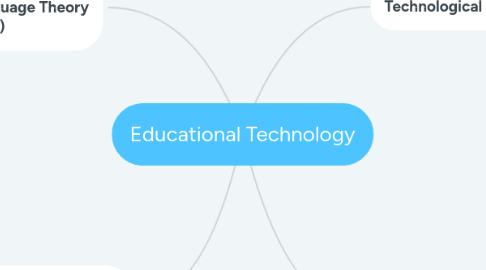
1. Communicative Language Theory (CLT)
1.1. Print V. Digital Media
1.1.1. While digital media may be more easily accessible, students tend to retain and comprehend more material via print texts
1.2. Multitasking
1.2.1. multitasking does not increase performance, and students tend to produce better work when focused on singular tasks
1.3. Importance of teachers to motivate, connect and communicate with individual student's to meet individual needs
2. Developmental Learning Theory (DLT)
2.1. Kohl's experiential learning theory-
2.2. Making learning concrete/tangible
2.2.1. Presenting students with experiential opportunities to access content provides pathways to abstract laerning
2.3. The representation continuum
2.3.1. multimedia, particularly video, can help to bring abstract concepts (such as the function of organs) into the visual realm.
2.4. Learning Styles
2.4.1. Learning styles are not connected to deeper learning, as they can create paths of perceived ease to students and give students a sense that they cannot learn in different "styles"
3. Technological Literacy
3.1. Inquiry learning w/ E-learning
3.1.1. Inquiry can actually be stifled by the internet, as it can give students a sense that they already know all the answers before they've investigated their problem.
3.2. What is Technological Literacy
3.2.1. one's ability to use, manage, evaluate, and understand technology (ITEA, 2000/2002).
3.2.2. Selber on TL: students are "users of technology, questioners of technology and producers of technology. Students are all of these things and need to be able to shift back and forth between the different roles."
3.3. The Nature of Technology
3.3.1. "Technology is a complex social enterprise that includes not only research, design, and crafts but also finance, manufacturing, management, labor, marketing, and maintenance." (AAAS)
4. Ethics of Technology
4.1. Environmental Concerns
4.1.1. social and environmental costs of producing technology
4.2. Privacy Concerns
4.2.1. identify theft,
4.2.2. stalking
4.2.3. cyber-bullying
4.3. Copyright and fair use Concerns
4.3.1. students must understand that the ideas of others shape our own, and learn appropriate ways to cite and acknowledge sources of images, information, etc.
